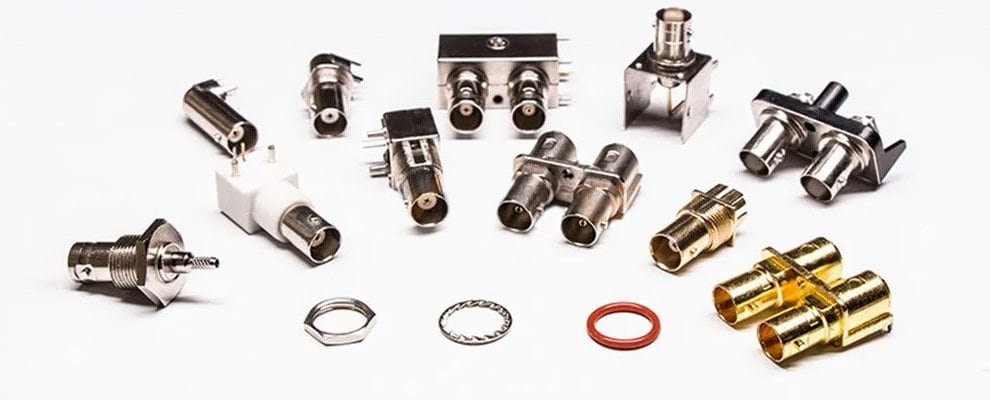When setting up RF or video systems, a common question arises: What kind of cable uses BNC connectors? The answer is coaxial cables, paired with BNC connectors, forming a reliable solution for high-frequency signal transmission. BNC coaxial cable adapters play a vital role in ensuring compatibility across devices. In this article, we’ll explore the problem of identifying these cables, analyze their specifications and applications, and provide solutions for seamless connectivity—whether through standard setups, adapters, or custom designs.
The Problem: Identifying Cables for BNC Connectors
BNC connectors are widely used in industries like broadcasting and telecommunications, but selecting the right cable can be confusing. Businesses often face challenges such as:
- Compatibility Issues: Mismatched connectors or cables leading to signal loss.
- Application-Specific Needs: Uncertainty about which cable suits a particular frequency or distance.
- Connection Flexibility: Needing to integrate BNC systems with other connector types.
Understanding what cables work with BNC connectors and how to adapt them is essential for efficient operations.
Analysis: Breaking Down BNC Connectors and Cables
What Are BNC Connectors?
BNC connectors (Bayonet Neill-Concelman) are RF connectors known for their quick, secure bayonet-style coupling. Initially designed for military use, they’re now standard in:
- Radio and television equipment
- Test instruments
- Video surveillance systems
They come in 50-ohm and 75-ohm variants, each tailored to specific signal types—50-ohm for RF and data, 75-ohm for video.
What Are Coaxial Cables?
Coaxial cables feature an inner conductor, insulating layer, shielding, and outer jacket. This structure minimizes interference and signal loss, making them ideal for BNC connectors. Their impedance (50 or 75 ohms) must align with the connector and device for optimal performance.
Cables That Use BNC Connectors
Several coaxial cables pair with BNC connectors, each with unique traits:
- RG-58: 50-ohm, perfect for RF applications like radio communication.
- RG-59: 75-ohm, common in CCTV and video setups.
- RG-6: 75-ohm, used for cable TV and satellite systems.
- RG-11: 75-ohm, suited for long-distance video with low loss.
The choice depends on frequency, signal type, and installation environment.
The Role of Adapters
Adapters bridge compatibility gaps. Keywords like rf adapter BNC, coaxial cable adapters, and BNC RCA cable adapter highlight their importance. For instance:
- BNC to RCA: Links BNC systems to consumer devices.
- BNC to SMA: Connects to RF testing equipment.
Solution: Choosing and Implementing the Right Setup
Step 1: Match Impedance and Cable Type
- For RF Applications: Use RG-58 with 50-ohm BNC connectors.
- For Video Systems: Opt for RG-59 or RG-6 with 75-ohm BNC connectors.
Step 2: Leverage BNC Cable Adapters
When standard cables don’t fit:
- Use a BNC cable adapter to extend or convert connections.
- Example: A BNC RCA cable adapter connects a CCTV camera to a TV.
Step 3: Consider Custom Solutions
For unique needs, BNC coaxial cables custom or coaxial cable custom BNC offer:
- Tailored Lengths: Reduce clutter and signal degradation.
- Special Shielding: Enhance performance in noisy environments.
Case Study: Custom BNC in Action
A broadcasting firm needed a 100-meter run for a high-definition video feed. Standard RG-6 wasn’t enough due to interference. A custom RG-11 cable with a 75-ohm BNC connector and extra shielding solved the issue, delivering crisp signals.
Step 4: Installation Best Practices
- Secure the Bayonet: Ensure a firm lock to avoid disconnection.
- Inspect Regularly: Check for wear on cables and BNC cable adapters.
- Quality Matters: Use reliable coaxial cable adapters to maintain signal integrity.
Why BNC Coaxial Cable Adapters Matter for Your Business
BNC connectors and coaxial cables are more than technical components—they’re solutions to connectivity challenges. Whether you need a simple coaxial cable adapter or a custom BNC coaxial cable, the right combination ensures:
- Reliability: Consistent signal quality for critical operations.
- Flexibility: Adaptable setups for diverse equipment.
- Cost-Efficiency: Fewer replacements with proper selections.
For clients, this translates to smoother projects and happier customers. Need a specific setup? Contact us for tailored BNC cable adapters or custom solutions.
Conclusion
To answer What kind of cable uses BNC connectors?—coaxial cables like RG-58, RG-59, and RG-6 are the backbone, enhanced by BNC coaxial cable adapters. By analyzing your application’s needs and choosing the right cable and adapter, you solve connectivity issues effectively. From standard BNC cable adapters to coaxial cable custom BNC, this guide equips you with the knowledge to optimize your RF and video systems, driving operational success.

 Coaxial Cable Assembly
Coaxial Cable Assembly Microwave Test Cable
Microwave Test Cable Coaxial RF Connector
Coaxial RF Connector Coaxial RF Adapter
Coaxial RF Adapter Coaxial RF Termination
Coaxial RF Termination Coaxial RF Test Probe
Coaxial RF Test Probe Coaxial RF Attenuator
Coaxial RF Attenuator RF Switch
RF Switch Coaxial RF Power Dividers
Coaxial RF Power Dividers